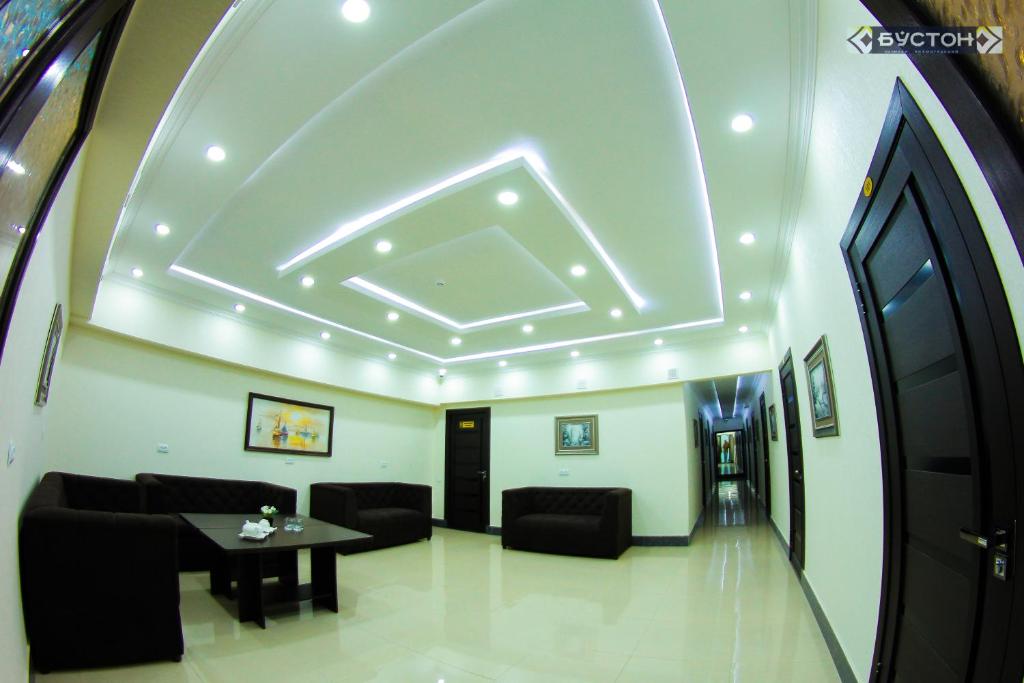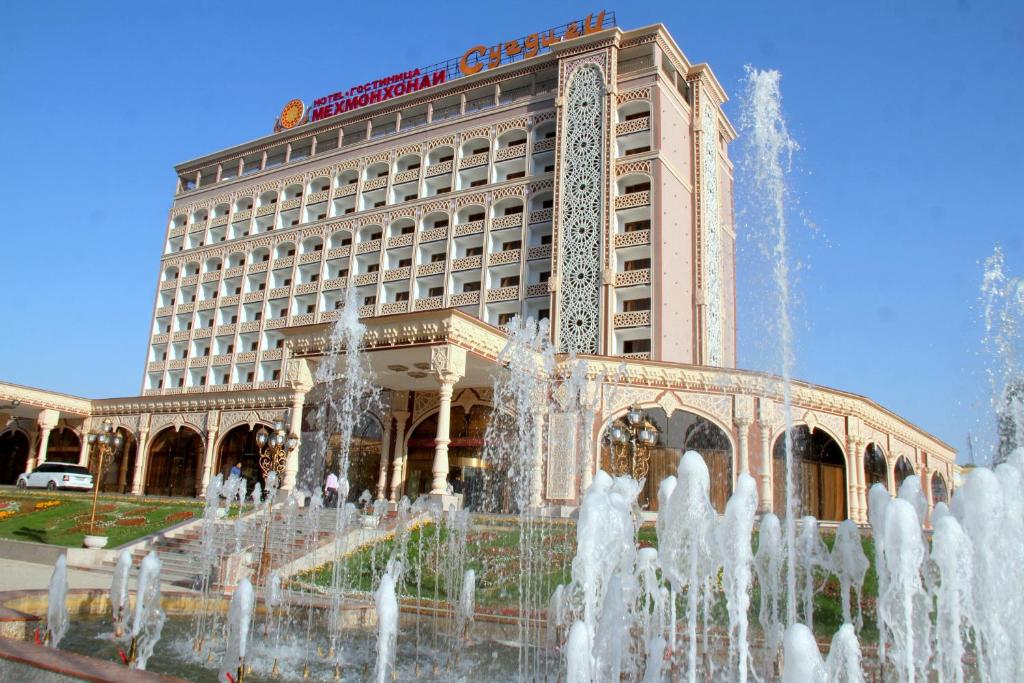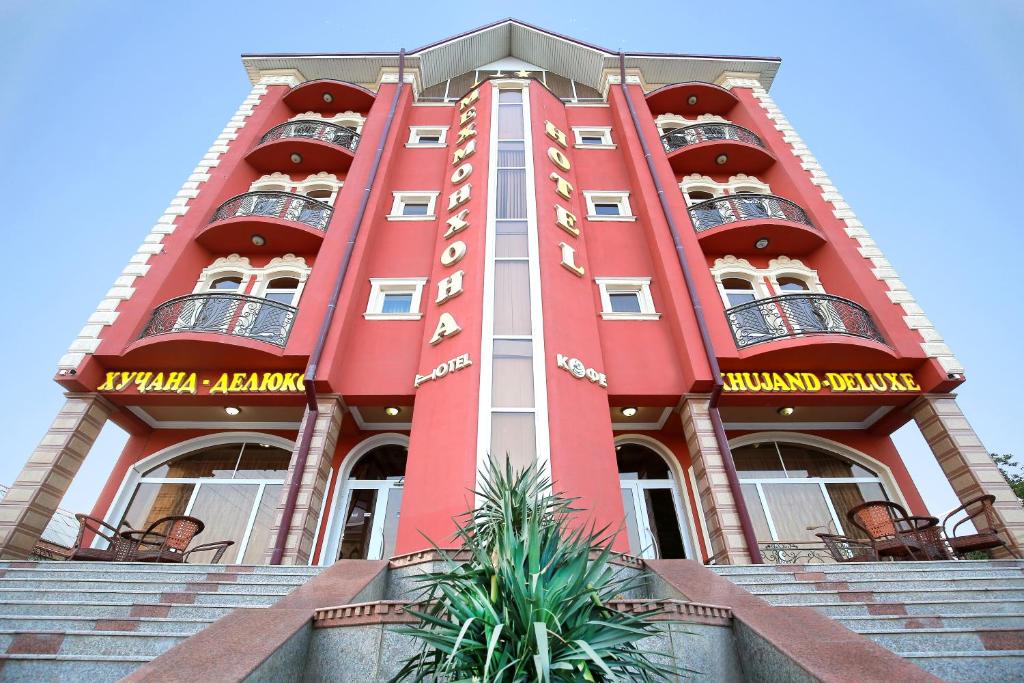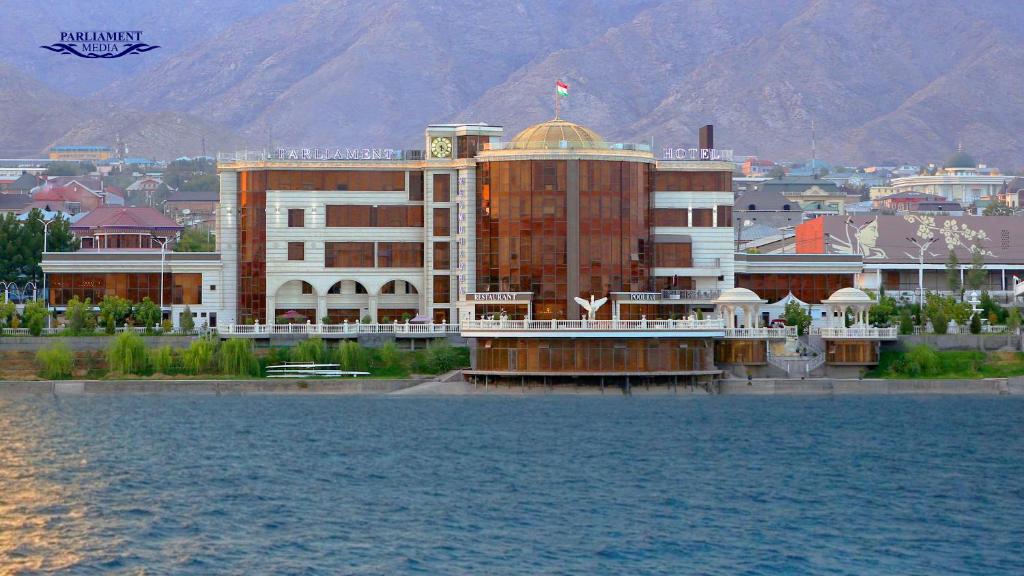This route has a historical, cultural and informational nature, and covers the visit and meeting of the achievements of ancestors, which were achieved ten centuries or a thousand years ago. The significance of the ancestors' achievements is that they remain world-famous to this day, and the initiators - the ancestors of the Persian-Tajik people are recognized as extraordinary people, scientists and scholars, and prominent figures of religion and knowledge.
TAJIKISTAN is the land of the highest peaks, powerful glaciers, rapid, turbulent rivers, unique beautiful lakes, unique vegetation and rare animals. It is the mountain, floor landscape that determines the distinctiveness and uniqueness of the nature of Tajikistan, the richness of its forms brought by the diversity of climatic zones. In the republic, in an hour and a half of flight from the sultry heat of the Vakhsh valley, you can get into the arctic cold of the eternal snows of the Pamirs.
The history of the Tajik people dates back to the depths of centuries, to the beginning of human civilization. The most ancient finds on the territory of modern Tajikistan serve as the evidence. The mountains and valleys of Tajikistan, the peoples who lived on its territory are mentioned in ancient sources of ancient authors: Pliny and Ptolemy.
At the beginning of the 9th century, tendencies toward national self-identification of the people arisen, the first state formations of Tajik people appeared, the largest of which was the Samanid state with its capital in Bukhara, founded by Ismail Somoni from the Samanid dynasty.
The Tajiks made a significant contribution to the spiritual treasury of civilization, gave the world outstanding and remarkable scientists, philosophers, writers, poets and architects whose works have become an integral part of the scientific and cultural baggage accumulated by the world civilization. Examples of this are the lyrics of Abuabdullo Rudaki, the founder of Persian-Tajik literature, the immortal poem “Shahnama” by Abul Qasim Firdausi and “The Canon of Medical Science” Abu Ali Ibn Sina (Avicenna), the treatise that for centuries served as the main medical guide in European educational institutions. The world poetry stars: Khayyam, Rumi, Saadi, Hafiz, Jami, masters of artistic creativity Borbad, Mani, Behzod – were known far beyond the boundaries of ancient Sugd, Khorasan and Movarounnahr – the main territory of modern Central Asia.
Tashkent is the capital city of Uzbekistan. It has a population of over 2 million people and is the largest city in the country. Tashkent is known for its important cultural and historical landmarks, including the Khast Imam Complex, which houses the world-renowned Quran of Caliph Uthman. The city is also home to several museums and parks, including Amir Timur Museum and the Central Botanical Garden.
07:00 – Welcome of tourists from the hotel in territory of Tashkent, Uzbekistan, departure to Khujand, Tajikistan
Note: in supposed to save the time there is will be used two shuttle (vehicle): first from Tashkent to Tajikistan border (as taxi) and second from Tajikistan border to Khujand, special private vehicle.
10:00 – Arriving Khujand
Visiting places: Central square of Khujand – Khujand Fortress – Jomi Mosque – Panjshanbe Bazar – Arbob Cultural Palace and museum
Khujand
One of the oldest cities in Central Asia is Khujand. The second largest city in Tajikistan, an important transport hub, political, economic, cultural and scientific center of the country. Khujand is located on the banks of the Syr Darya, below the Qayroqqum reservoir, in the Fergana Valley. Khujand is one of the oldest cities in Central Asia, according to some sources, the foundation of the city falls on the VII-VI centuries BC. It was conquered by Alexander the Great, who rebuilt and strengthened it, calling Alexandria Eshata (Extreme).
Khujand Fortress
The Khujand Fortress was founded in the VI—V centuries BC. According to the archaeological dates, the Khujand fortress was first surrounded by a bulk rampart, later by a wall of considerable thickness made of raw material. The city and the citadel — components of ancient Khujand, had separate fortress walls surrounded by a wide and deep moat filled with water. The remains of these fortifications were found under the central part of the left-bank Khujand and surround the territory of the ancient city with an area of 20 hectares. With the development of the economy, trade, government system and population, the city is growing. In the VI—VII centuries, a new fortress was built. Medieval Khujand consisted of three main parts: Citadel, Shahristan and Rabad. The citadel was located on the bank of the Syr Darya at the Rabad gate. The medieval Khujand fortress was considered one of the most fortified in Central Asia. During the invasion of Chinggis khan (1219-1220), a 25,000-strong army with 50,000 Central Asian solders was sent to besiege the city. The heroic defense of the Khujand fortress under the leadership of Temurmalik is one of the brightest pages in the history of the liberation struggle of the Tajik people.
Jami Mosque
The Jami Mosque is a complex of Sheikh Muslihiddin, a monument of folk architecture of the XVI century. The object is located on the western side of Panjshanbeh Square. The facade of the building faces Shark Street. The mosque was built in 1512-1513. The multi-column (30 columns) aivan adjoins the eastern wall of the winter hall, also multi-column (20 columns), and enters the courtyard of the mosque.
Panjshanbe Bazar
Panjshanbe Bazar is one of the attractions of Khujand, is located in the center of Khujand, and opposite it stands the mausoleum of Sheikh Muslihiddin. The bazar consists of the main pavilion and many shops, tents, and shops adjacent to it. It is always very noisy here, as not only residents of the city come to shop, but also guests from nearby villages. The main feature of the Panjshanbe Bazar is its unique architecture and decor. The bazaar building combines elements of classicism and Stalinist Empire style, and the decoration is harmoniously executed using Soviet and Oriental styles. A hemispherical portal decorated with bright paintings rises above the central entrance, and sculptures of a man and a woman are installed on the sides. If you go inside, you can see a long-vaulted hall with slender rows of columns. In Panjshanbe Bazar we have time for shopping
Arbob Cultural Palace
The Arbob Cultural Palace is a building in Khujand, Tajikistan, the former headquarters of a Soviet collective farm, built in the 1950s and modelled on the winter gardens of Peterhof, St Petersburg. The main building consists of three wings - with an ornate theatre seating 800 people in the main wing. The South wing currently houses a museum which tells the history of Arbob and of collectivization and the soviet empire in Tajikistan. The building had particular significance in 1992, when it was the site for the meeting of the Tajik Soviet which officially declared independence from the Soviet Union. It was the site where the Tajik flag was chosen. More recently, in the late 1990s it was also the site where peace conferences following the Tajik civil war were held. In particular, Tajik President Emomalii Rahmon first came to prominence speaking at the Palace, and it was the site for a "plov of peace" which celebrated successful negotiations towards an agreed end to the Tajik civil war.
13:00 – Lunch in the restaurant
Tajik Sea
Kayrakum also spelled variously as Qayroqqum, Qayraqqum, Kayrakum or Kairakum, is a large artificial lake in Ghafurov District of Sughd Province, in northwestern Tajikistan. In 2016, the reservoir was renamed Tajik Sea (Tajik: Баҳри Тоҷик) by the country's parliament. The reservoir lies in the western part of the Fergana Valley on the Syr Darya river. The provincial capital of Khujand lies about 15 km west of the dam. A 1150 km2 tract of land encompassing the reservoir and its surrounds has been identified as an Important Bird Area (IBA) by BirdLife International because it supports 4 significant numbers of the populations of various bird species, either as residents, or as overwintering, breeding or passage migrants
Bahoriston Sanatorium
In a vivid oasis of Sogd valley of Tajikistan, on a shore of a purest Kairakkum reservoir, which is also called the Tajik sea, is located a new sanatorium “Bahoriston”. “Bahoriston” became famous with its rich infrastructure, modern medical diagnostics and highquality of service. “Bahoriston” from Tajik/Persian means “Kingdom of Spring”. The naming is not just a coincidence. The founder of sanatorium National Bank of Tajikistan created on the shore really ideal environment for recreation and treatment. The green area of this health resort makes 22 hectares. Lovely land planning, various infrastructures, neat sidewalks with antique designed street lamps, lawns with bright-green grass and flowers, a lot of beautiful and lovely fountains during summer, cozy wooden arbors carved in traditional Tajik style, various statues, children’s playgrounds and areas, outdoor pools with areas for rest, picnic areas, everything is done to deliver maximum comfort and pleasure for the guests. Sanatorium has its own comfortable beach. The beach season in Tajikistan is from June to September inclusively. But already May has many warm days. Wonderful natural healing factors, modern medical diagnostics, experienced resort doctors and nurses will allow you to get a full treatment of the following profiles. Results always impress everyone who took complete course of spa treatment of sanatorium “Bahoriston”: 98% discharged with improvements; average length of remission after the treatment is 9 – 12 months; morbidity will decrease 2-3 times. In Bahoriston sanatorium we have time for relaxing, swimming and boating (at the request and expense of traveler).
18:00 – Back way to Khujand, dinner and accommodation to hotel
Iskanderkul Lake, Khujand-Ayni
07:00 – Breakfast in hotel
08:00 – Deperture to the Iskanderkul Lake
12:00 – Arriving Iskanderkul Lake and visit Panjchashma
ISKANDERKUL LAKE, located in the amazingly beautiful Fan Mountains, has a rather rich and long history. It is believed that it was named in honor of the commander the Great Alexander, whom the locals called Iskander Zulqarnain, which means "Iskander the two- horned" (because of the unusual helmet that resembled horns). Iskanderkul is called a pearl in the palms of the mountains, a living legend. A lot of tourists come to this mountain reservoir. There are guest houses for their stay here, but foreign visitors prefer to rest in tents.
PANJ-CHASHMA - a place called "Five Springs" for an unusual natural phenomenon, where pure spring water flows from five highlands into Lake Iskandarkul. The sight is so mesmerizing that it is impossible to take your eyes off.
13:00 – Lunch, after lunch hiking to the Lake Moron (Snake Lake) and Iskandarkul Waterfall
SNAKE LAKE. Not far from Iskanderkul there is another lake called Snake Lake. According to the stories of old-timers, many snakes live in it. Locals claim that reptiles will not bite in two cases: when they are in the water and when people drink water.
FAN NIAGARA WATERFALL. Nearest of the Lake Iskanderkul there is an old juniper (juniper bush), the branches of which are decorated with colorful ribbons. Everyone who comes to admire the local amazing waterfall leaves something of their own on this tree to return here again in the future.
17:00 – Departure to Dushanbe
20:00 – Arriving Dushanbe, dinner and accommodation to hotel
Departure Day, Dushanbe sightseeing
07:00 – Breakfast at the hotel
08:00 – Dushanbe city tour
Visiting places: National Gerb Square - Navruzgoh Park - Kokhi (Palace) Navruz – Eram Park – Istiqlol (Independence) Monument and Square – observation deck Istiqlol
Ismoil Somoni complex
Our tour begins with a visit to the Ismoil Somoni complex. In this complex, there is a monument of Ismoil Somoni and Dusti Square. The monument of Ismoil Somoni constructed in honor of the founder of the statehood of the Tajik nation Ismail Somoni. I. Somoni was the head of the Samanids State in the VIII-IX century. Monument height is 11.5 meters; arch height of 40 meters is a symbol of the Eastern state.
National Library
The National Library - located in Dushanbe, Tajikistan is the main library of the country, specializing in preserving cultural heritage of the peoples of the Republic of Tajikistan. While the original library state library in Dushanbe was founded in 1933 and named after Persian- Tajik author Ferdowsi, the new national library building opened in March, 2012 alongside its new official name. The new nine-story building features 15 reading halls as well as over 20 departments.
Flagpole
Next object, which we will visit, is the Rudaki Park and Flagpole. The STATE FLAG SQUARE is located in the center of Dushanbe, to the left of the Nation Palace. This Flagpole entered in the Guinness Book of records as the Highest Flagpole in the world. The height of the flagpole is 165 meters, area 1800 m2, width 30 meters and length 60 meters.
National Museum
National museum located in the center of Dushanbe. The Museum consists of 22 large and small exhibition halls – departments of nature, antiquity and the middle ages, modern history, fine and applied arts. The exposition area of the National Museum of Tajikistan is 15 thousand m2
13:00 – Lunch. After lanch we will visit National Gerb Square - Navruzgoh Park - Kokhi (Palace) Navruz – Eram Park – Istiqlol (Independence) Monument and Square – observation deck Istiqlol
Kokhi (Palace) Navruz — is a new building of 12 unusual halls, each of which is made in its own special national style. It is ready to receive up to 3200 guests at the same time. All the halls of the palace are decorated by local craftsmen: there are wood carvings, Florentine mosaics made from local semi-precious stones, mosaics of colored mirrors, and painted ceilings. On the walls there are scenes from ancient legends, on the ceiling there are wood patterns made in the old style. Navruz Palace impresses with its splendor and modern luxury - it is a representative palace in which important political events of the country and international meetings take place. It was within these walls that the 14th SCO summit took place.
Eram Park
This Park located in the Northern part of Dushanbe. The garden area reaches 40 hectares; the main entrance to the garden is start from the East. The alley goes to the glass greenhouse, where the alleys and paths of the Botanical garden originate. Parker was established in Dushanbe in mid-1933
IMAM A’ZAM MOSQUE
As an honor to the founder and leader of the tolerant Hanafi teachings of Abu Hanifa Numon ibn Sobit, and dedicated to the celebration of his 1310th anniversary on October 5, 2009, a stone was laid in the foundation for the construction of this largest mosque in the Republic of Tajikistan. The mosque was built on 12 hectares of which the building of the mosque is located on 3 hectares and has 3 large entrances. The mosque can accommodate 133,000 worshipers simultaneously, of which 43,000 worshipers – inside the mosque and the rest – around it.
Istiqlol (Independence) Monument and Square
The Istiqlol-Independence Monument and Istiqlol Square were opened on September 8, 2022 with the participation of the Leader of the Nation, the President of the Republic of Tajikistan, Emomali Rahmon, in honor of the 31st anniversary of the State Independence of the Republic of Tajikistan. The 121-meter height of the Istiqlol complex is symbolic, that is, the lower part of the 30–meter complex is a symbol of the 30th anniversary of State independence, and the upper part - 91 meters – represents the independence in 1991 of the last centuries. The total area of the symbolic complex "Istiqlol" is 11900 square meters, the area of the object under construction is 4761 square meters. In the upper part of the complex there is an 8-meter crown made of titanium. In the symbol of Independence, the crown embodies the symbol of statehood, independence, state property and civilization, knowledge of the history of the ancient Tajik people. The base of the complex is an octagonal pyramid and consists of 7 entrances. When drawing up a project with the symbol "Crown", the designer relied as a basis on the symbol "Tree of Life", which represents and embodies broad ideas
18:00 - End of day
According to the flight time, departure to the Dushanbe international airport



